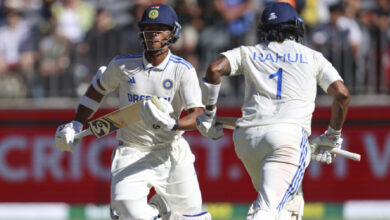India vs England: Lessons from the past

The matches between India and England have always been very closely contested. But some of their recent games have been high-scoring affairs, with the balance tilting in India’s favour ever so slightly.
At the Birmingham CWG, England staged a stunning comeback to hold India to a 4-4 draw after being down 1-4. Before that, the two games in the FIH Pro League ended in a 4-3 win for India and a 3-3 draw while at the Tokyo Olympics, India beat their old rivals 3-1 in the quarterfinals.
Each of those matches followed a trend and provided a glimpse into what should be expected during Sunday’s crucial encounter, a virtual must-win for both teams in the race to top Pool D and qualify directly for the quarterfinals.
More than half of goals from corners
Penalty corners are the go-to source of goals for most teams in modern hockey but in the last four matches between India and England, the set piece has contributed to more than half of the goals scored. In fact, during an FIH Pro League match in Bhubaneswar last April, which India won 4-3, all seven goals were scored from corners.
Both teams have a plethora of drag-flicking options. For India, Harmanpreet Singh is the key man for such situations and is backed up Amit Rohidas, Varun Kumar while on Friday, Jarmanpreet Singh stepped up to take a shot as well. England have Sam Ward, Liam Sanford, Nick Bandurak and David Condon as the main threats from PCs.
Against Spain, coach Graham Reid mixed things up and had Jarmanpreet Singh have the first go from a corner, in a deviation from the past. But captain Harmanpreet Singh was unable to convert the four other chances the team got from corners as well as missed a penalty stroke.
On an otherwise near-perfect evening, the penalty corner conversion rate was one of the few aspects where India were below-par.
Short goal bursts
In each of the last four matches, there have been spells where teams have gone on a scoring rampage. Most recently, at the Commonwealth Games, Mandeep Singh’s brace and a goal each Lalit Upadhyay and Harmanpreet Singh gave India a comfortable 4-1 lead and they looked on course to an easy win. But England turned the match on its head scoring three goals in the space of six minutes in the final quarter, including two from Bandurak to deny India a win.
Rourkela: Amit Rohidas (30) of India celebrates after scoring a goal against Spain during a match of the FIH Odisha Hockey Men’s World Cup 2023, at the Birsa Munda Hockey Stadium in Rourkela, Odisha, Friday, Jan. 13, 2023. (PTI Photo/Swapan Mahapatra)(PTI01_13_2023_000306A)
Before that, during the Pro League, there was another six-minute burst where England scored twice and India found the back of the net once. But Harmanpreet’s hat trick, which included two goals inside one minute, ensured a close win for India but not before they were stretched to the limit a defiant England.
The goal bursts hint at a level of complacency creeping in among both units immediately after scoring and after taking a seemingly-comfortable lead. Teams are often most vulnerable after scoring a goal and that is evident from the trends in the India-England match, where both sides have traded blows.
Complacency and England’s comebacks
India have gradually over the years shed their reputation of conceding late goals but England have time and again shown them that old habits die hard. They have staged late comebacks in two out of the last four games and very nearly pulled off a Houdini act in the other two matches.
The 4-4 draw at the Birmingham CWG will rankle India in particular, given they enjoyed a three-goal cushion in that game before allowing England to snatch a draw from the jaws of defeat.
That should be India’s biggest lesson from their recent encounters with England – no matter how big a lead they enjoy, England are never really out of the game. More so the current side, with their ‘Bazball’ style of hockey.







